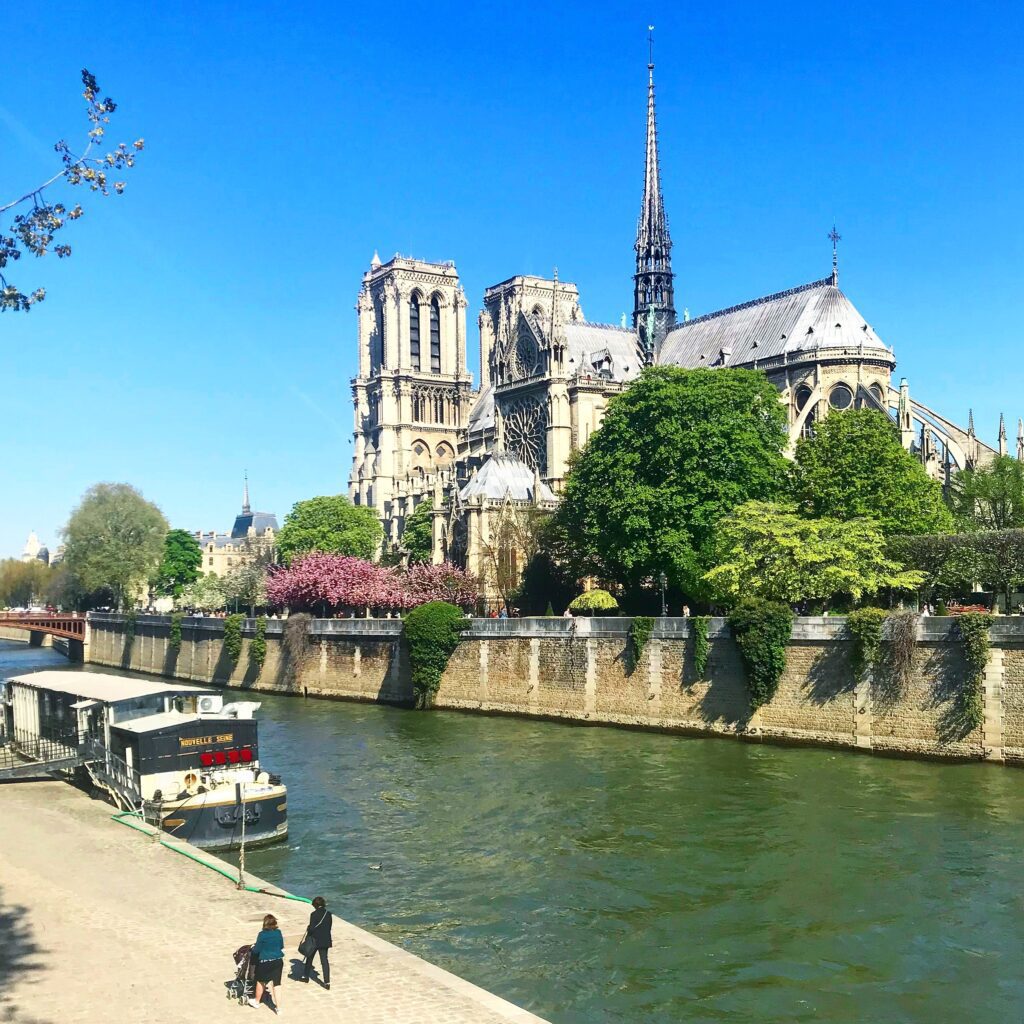
It’s not that we’re not used to destruction in this world. Terrorism has sadly ensured that we now live with the inevitability that violence will break out at random moments, in unpredictable places. We’re even attuned to expect regular bouts of destruction through natural causes. A tsunami, say. We’re resigned to that. But destruction through accident? That seems like something that should be consigned to history, to a less enlightened and orderly past.
So it was no wonder at the shock so many of us felt to see Notre-Dame succumb to fire, seemingly due to accidental causes. A cathedral that has stood fast for 850 years, through revolutions, riots and wars … It is just meant to be, well, there.
For one, Notre Dame is the literal heart of France, the location from which all distances are measured.
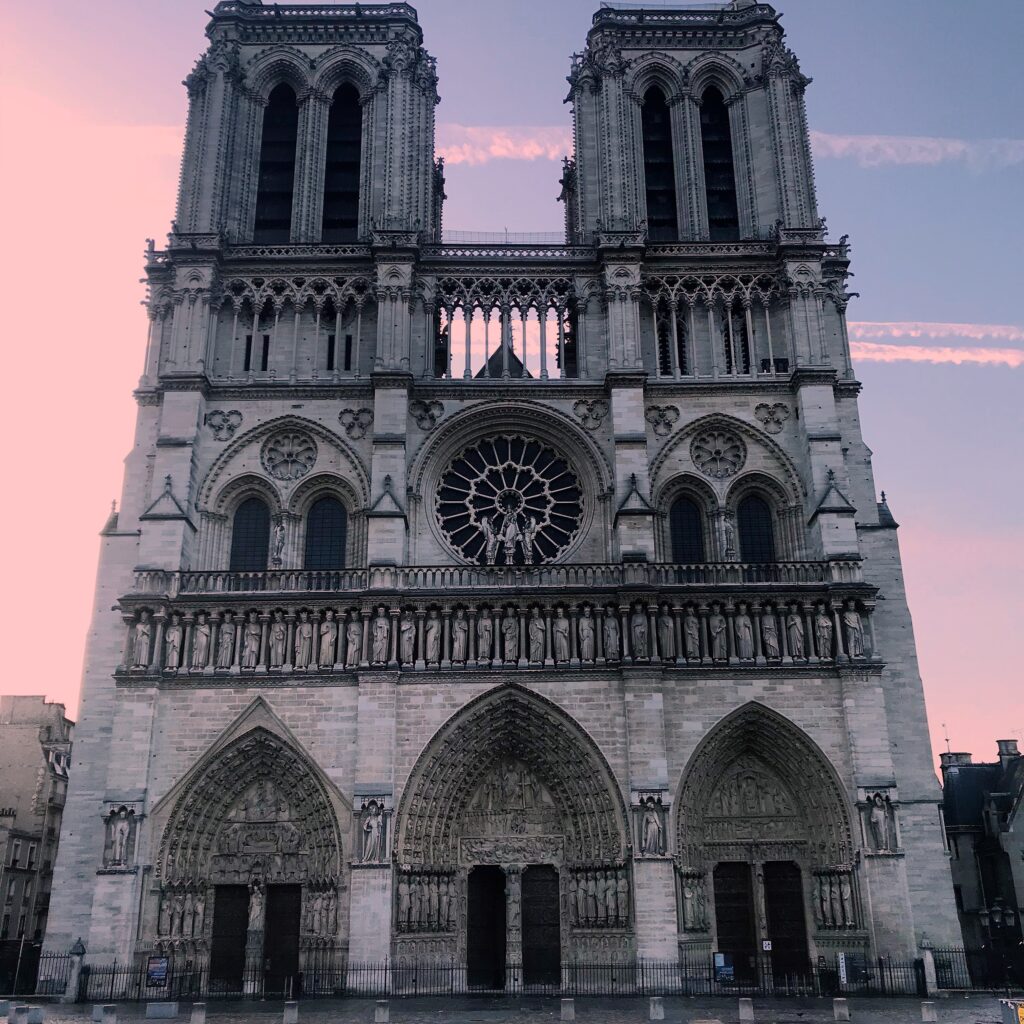
It’s also the heart of Paris, not just physically but emotionally. It was built on the location that had seen a succession of churches throughout past centuries, and earlier still a Roman temple dedicated to Jupiter. Julius Caesar had conquered the fishing village of the Parisii back in 52BC, establishing the city of Lutetia, the centre of which was this very island. The symbolism of Notre-Dame for Parisians (and lovers of Paris), religious or not, cannot be overstated.
Devastating is a word that has reverberated around social media, along with that heart-piercing image of the spire snapping in two amid a fiery plume. And then came the collective sigh of relief when it was reported that Notre-Dame had not in fact been totally devastated — that the towers, the structure and the precious rose windows had been saved.
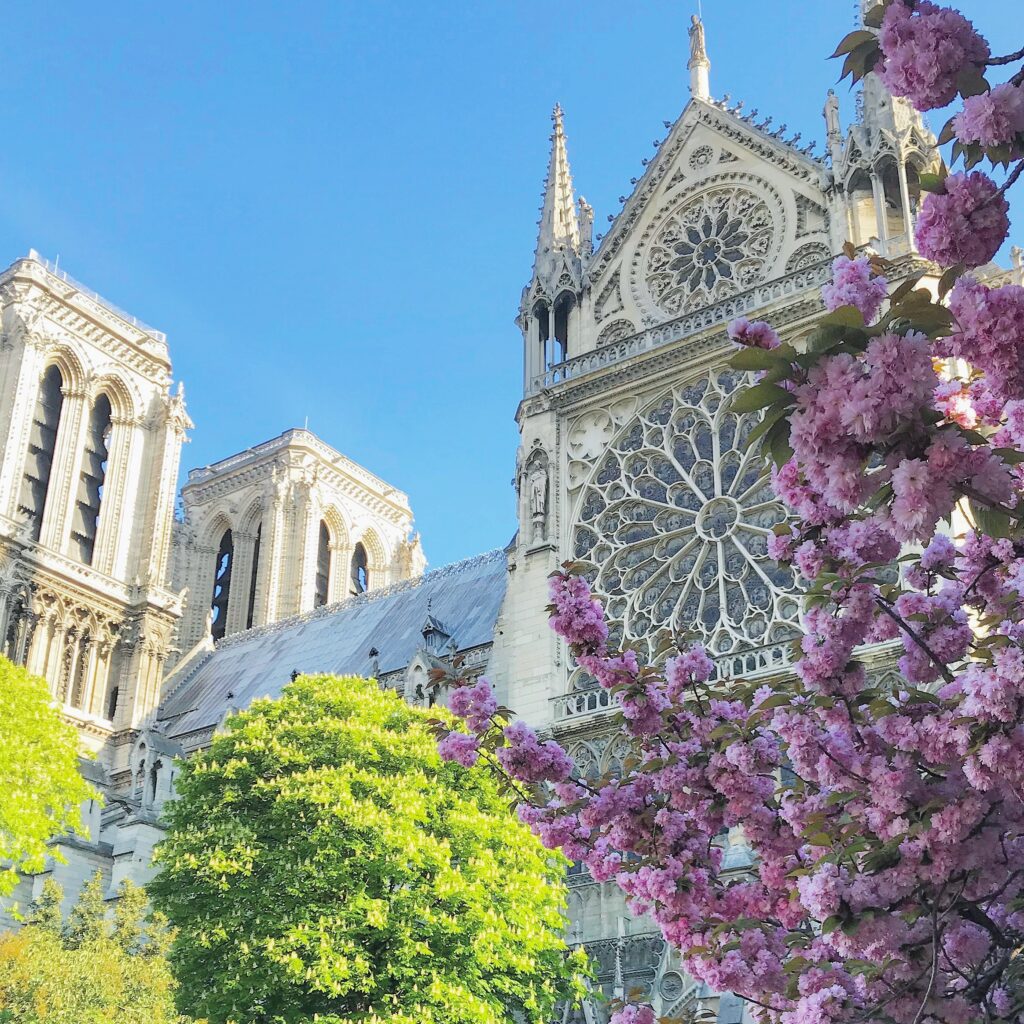
The pompiers de Paris were, of course, the heroes that they always are, but there was also a sense of some divine force also at play. Not in a religious way, necessarily. Because Notre-Dame is not just a shrine for Catholics. A secular building since the French Revolution (it’s owned by the State, but managed by the Catholic Church), the cathedral is a monument to exquisite craftsmanship, to the exalted heights to which humans can scale in our quests for creation.
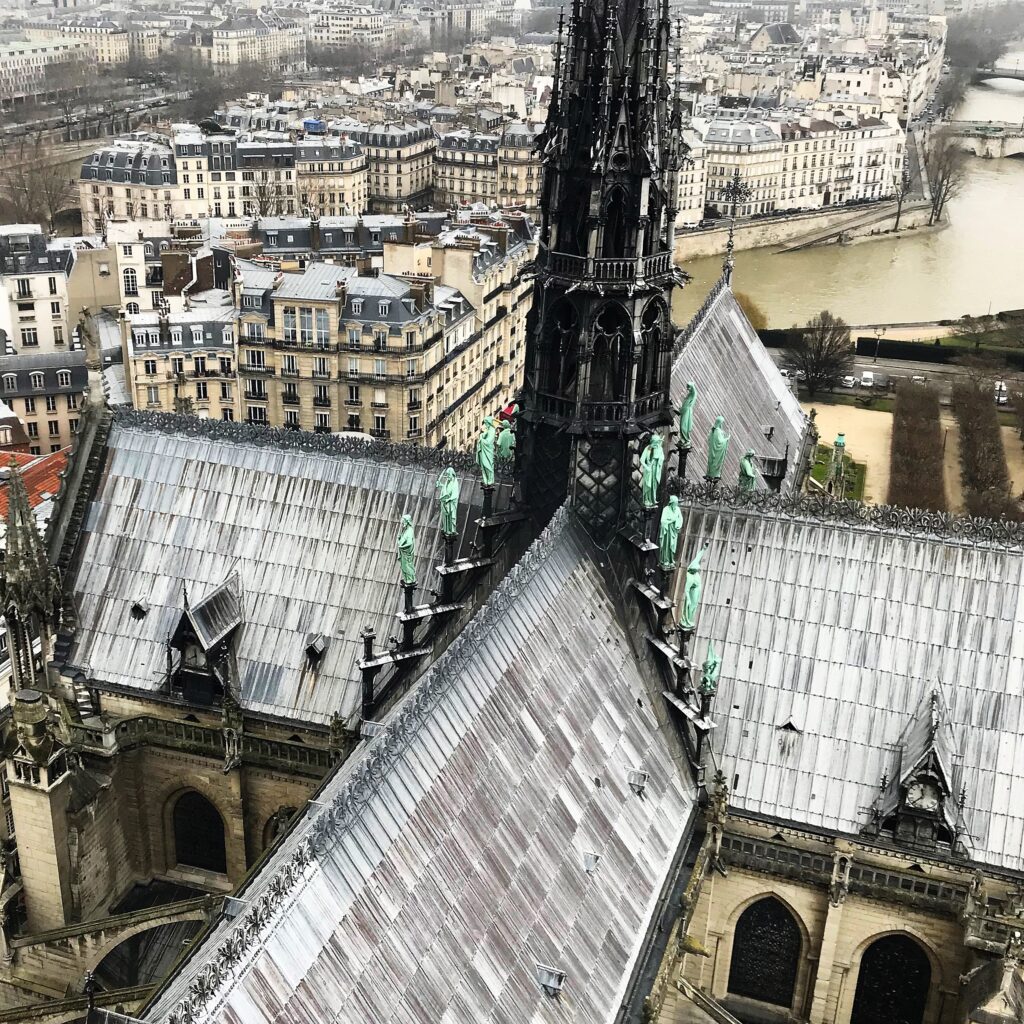
Started during what historians now call the Twelfth-Century Renaissance — as Paris was emerging from the so-called Dark Ages — Notre-Dame was one of the first and finest examples of emerging Gothic architecture. It required and inspired a whole new generation of Parisians artists: architects, builders, masons, sculptors, glassmakers, painters …
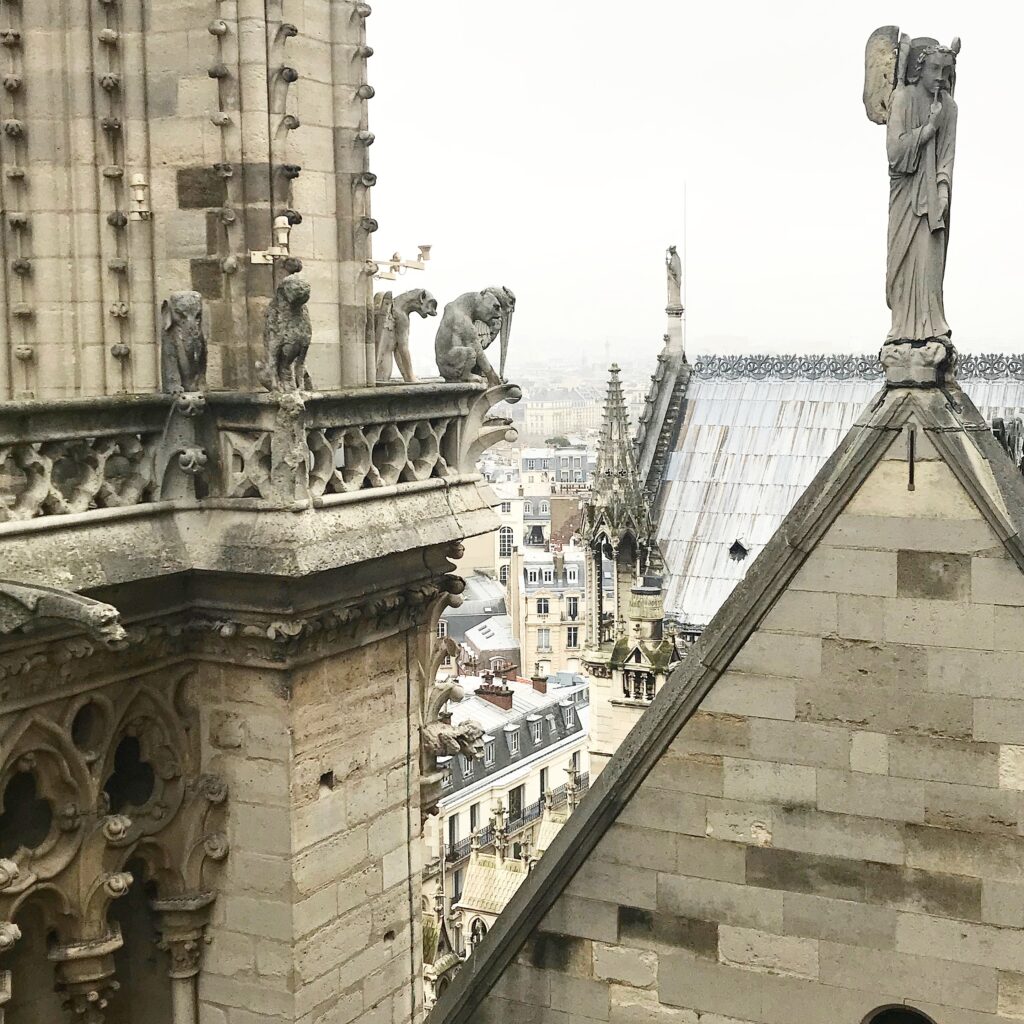
And while Gothic architecture might have then been a Christian endeavour, with pointed arches and spindly spires straining skywards as though in prayer, here’s an interesting take on its global significance: the original inspiration came from the East, after the First Crusade of 1095 opened up trade routes that brought back not just exquisite wares of glass and gold, but also new ways of scientific and mathematical thinking. (Unlike the West, the East had not forgotten about the texts of Ancient Greece and Rome, and it was the retranslation of books on science, philosophy and mathematics from Arabic back to Latin that ignited the Twelfth-Century Renaissance.) The graceful pointed arches and dramatic rib vaulting throughout Notre-Dame in fact echo profoundly with Islamic influence.
So anyone can be moved by Notre-Dame; it’s one of the pinnacles of man-made beauty in our world, of which we should all be proud.
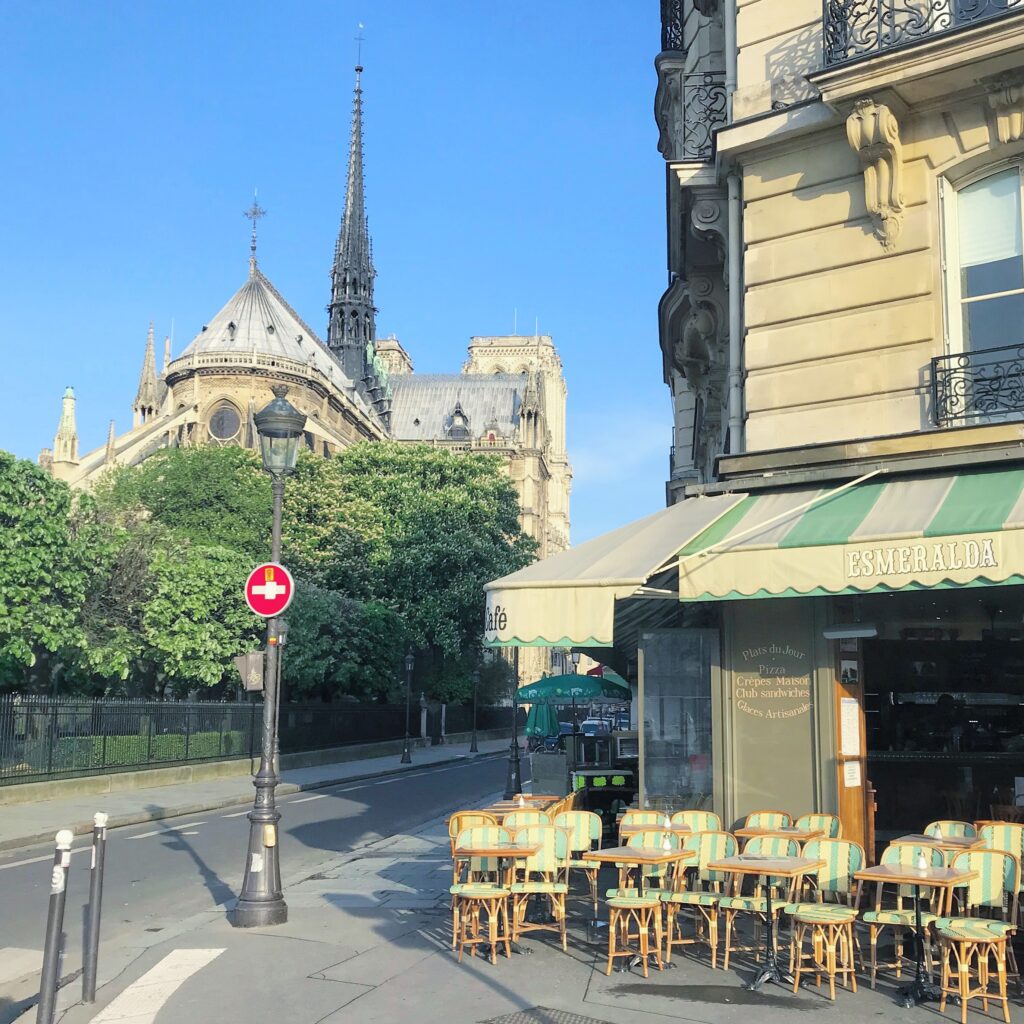
President Emmanuel Macron insists that Notre-Dame can be rebuilt in five years; others say a decade. Either way, it’s a relief. But perhaps it shouldn’t be a surprise. It’s now a simple matter of living history and Paris, more than many cities, has been built and rebuilt countless times. One day, centuries down the track, our descendants will read about the Great Fire of 2019, and this will be just one chapter of the story of Notre-Dame.

Speaking of the future, there’s a silver lining to all of this. Even though Notre-Dame was in the midst of a renovation, it was struggling for adequate funds to future-proof its crumbling stones. Thanks to French businessmen and companies who have pledged hundreds of millions of Euros, Notre-Dame now has the money it needs for a proper restoration. Nothing will replace the ancient oak frame, known as the forest, that once held up the roof, and there will be much debate on whether the ornate spire should be recreated or reimagined, but no matter the outwards appearance of Notre-Dame, at least we know that her heart will beat on.

